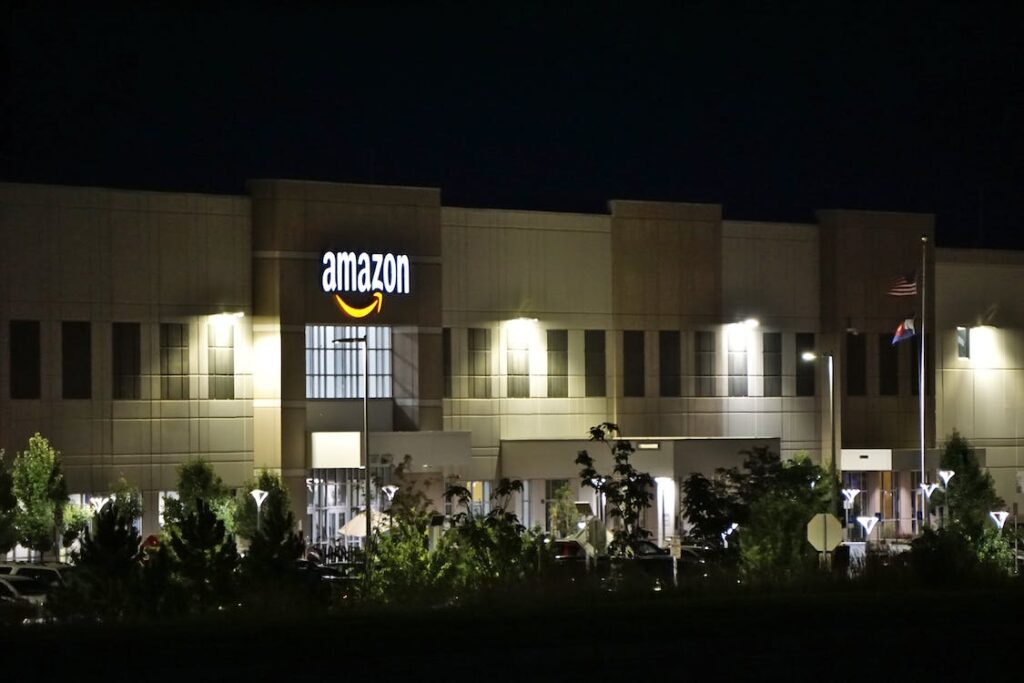The Biden administration’s campaign against companies that violate antitrust and competition laws shows no signs of letting up any time soon. The Justice Department’s case against Google was only in its infancy when another headline-grabbing lawsuit was filed – this time against Amazon, and by the Federal Trade Commission (FTC) itself.
The FTC had been widely derided as an ineffective government agency with little bark or bite, an image that appears to be set to change with the appointment of Lina Khan as the chairperson of the FTC two years ago. She has been a fierce critic of Amazon’s way of doing business since her assumption of the role, a criticism that has now been realised with the lawsuit. She is faced with no mean opposition from the mammoth company: it is estimated that Amazon spent $10 million in the first half of 2023 alone in its public relations battles against the public servant. The present lawsuit was filed on 26 September this year.

When the FTC was first established in 1914, it had the explicit goal of ensuring that the free market system in America did not fall prey to monopolies. It consisted of five commissioners, more than three of whom couldn’t be from the same party. The Commission was a legitimate force to contend with in the battle against companies that threatened the free market economy to great effect at first – although it came to lose its power in later years, under later administrations. The antitrust laws lost their power as the consumer welfare doctrine, i.e. the measure of consumer welfare through the price they paid for goods and services, took over. This new way of looking at things meant that competition laws were believed to be upheld as long as consumers paid the lowest possible prices for what they received. The lawsuit filed against Amazon flies directly in the face of this belief.
The FTC’s representations to the court request the judge to “free Amazon from its monopolistic control, to ban Amazon from the unlawful tactics it has employed, and to restore the lost promise of competition”. These allegations are made despite the fact that Amazon does offer its users the opportunity to pay the best prices on the market for what they receive. Instead, the lawsuit accuses the corporation of amassing a large portion of market share across a range of products and services by underpricing all its competitors out of the market before abusing its position as a retailer. As per the FTC’s filings, the user limitations on the company’s e-commerce platform also harm third-party vendors operating on its platform. The complaint in its entirety levels 20 separate charges against the company. These charges include allegations of the active maintenance of a monopolistic system, unfair methods of competition, and various infringements of state antitrust laws.
The greater part of the lawsuit focuses on the suffocative rules imposed by Amazon on its third-party sellers. Sales of third-party vendors account for about 60% of Amazon’s total sales and yet are forced to subscribe to additional services offered by the retail website for the opportunity to be featured on the platform. These all cost money, and third-party vendors on the platform are forced to either absorb the increased costs or raise prices for consumers. According to the FTC, third-parties are forced to pay close to half of their revenues in platform fees – which are ultimately borne by the consumer.
One of the tactics that suffocates natural competition employed by Amazon is its use of its search ads function. The paid element of this function allows for certain vendors to have their products placed higher on search results – above the results of those who obtain their position through organic market preference. The lawsuit specifically accuses Amazon of increasing the number of ads on search results, pushing organic search results farther and farther down the list. This forces third-party vendors to purchase a more favourable position on the search result list for even the chance to be seriously considered as a possible option. These paid-for positions are a lucrative source of revenue for the company and yet make for a bad user experience for the consumer as they are prevented from accessing organic search results that have been validated by consumer reviews.
Another feature addressed by the lawsuit is the ‘buy box’ function offered on the e-commerce website. When several vendors offer the same product on the website, as so often is the case, the website’s buy box function allows for one vendor to be prioritised when a customer selects the ‘add to cart’ option. The other vendors that offer the same product are relegated to the ‘other sellers’ section. This placing therefore is critical to all third-party vendors. There is only one way for third-party vendors to qualify for this placing: by qualifying for Amazon Prime. This entails subscribing to its family of services, including its logistics and shipping services for its products. Third-party vendors are therefore actively discouraged from utilising other logistics services that may be more competitively priced.
The lawsuit also challenges the fair pricing agreements with the vendors featured on its platform. This agreement effectively prohibits vendors from lowering their prices beyond an agreed-on floor price. Doing so makes the vendor run the risk of being suppressed on the search results page by Amazon. According to Amazon, this prevents vendors from unduly driving prices higher to the detriment of consumer welfare – for the vendors themselves, it prevents naturally occurring price competition that would ultimately benefit consumer welfare.
This isn’t the first instance where these website functions have been brought before the court system on allegations of antitrust violations. California and Washington DC, for example, have already sued Amazon over similar allegations. The case was dismissed outright in Washington and is still under consideration in California. In any case, antitrust lawsuits are difficult cases to prove and win before US courts, which tend to favour corporate freedom. Amazon will also be armed with its own counterarguments, some of which it has already made public in the media. In the case of the prioritisation of its own logistics services for example, the company argues that there is no law preventing Amazon from investing in its own logistics services that enable it to achieve a scale of operation that makes its services cheaper than anything the market has to offer. The ‘buy box’ option, which allows Amazon to highlight the most suitable option as it sees fit, is also arguably not illegal. Since Amazon is directing what it deems the most suitable search results to consumer attention, there is a case to be made that Amazon is merely facilitating competition instead of detracting from it.

Considering the fact that the two players involved in the case are two heavyweights in their respective sectors – a multi-billion dollar company for one and the US state on the other, the case will likely take quite some time to reach a resolution – barring the case being dismissed outright. The state winning the lawsuit seems to be a doubtful scenario for most – however, it is important to remember that Amazon has proven itself to be vulnerable to the law before. Amazon settled a previous lawsuit with the FTC for $30 million earlier this year over privacy issues with some of its products. There is another ongoing lawsuit concerning the subtle barriers imposed on the consumer by the corporate giant in choosing to unsubscribe from their services. Whatever the outcome, these lawsuits may well decide how e-commerce is carried out in the US and well beyond in the years to come.
(Theruni Liyanage)
